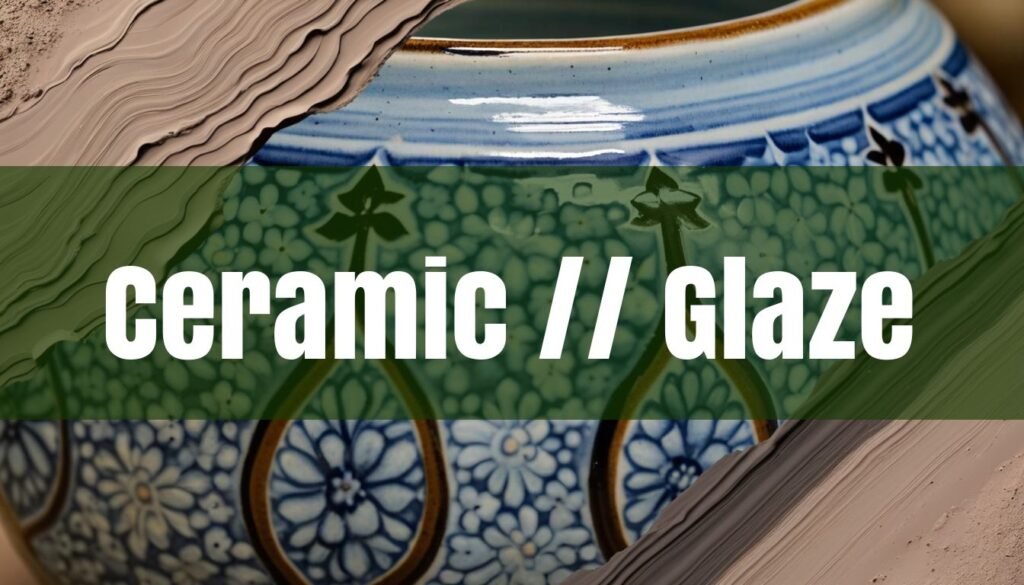Finding the perfect ceramic glaze can be a thrilling part of the pottery process, adding that final touch of color, texture, and functionality to your creations. While local pottery supply stores are fantastic, the internet offers an expansive marketplace with options you might not find nearby. This article will guide you through the world of online ceramic glaze shopping, highlighting the advantages, retailers, selection considerations, and safety tips to ensure a successful and enjoyable experience.
The Advantages of Buying Glazes Online
One of the primary reasons to explore online glaze retailers is the sheer convenience they offer. You can browse a vast selection from the comfort of your home, at any time of day or night. Online stores often provide detailed product descriptions, customer reviews, and technical specifications, allowing you to make informed decisions. Moreover, the internet breaks down geographical barriers, giving you access to specialty glazes and unique color palettes from suppliers across the country, or even the globe. This is especially beneficial if you’re searching for specific effects like crystalline, raku, or ash glazes, or need glazes formulated for particular firing temperatures or clay bodies.
Reputable Online Retailers
When embarking on your online glaze-buying journey, several reputable retailers stand out. The Ceramic Shop is a popular choice, known for its wide range of glazes, underglazes, and pottery supplies. They offer detailed product information and helpful customer service. Another excellent option is Big Ceramic Store, which boasts an extensive inventory and a user-friendly website. Many smaller, independent ceramic suppliers also have an online presence, offering unique, handcrafted glazes that you won’t find anywhere else. Be sure to check customer reviews and shipping policies before making a purchase. Look for retailers that offer secure payment options and clear return policies in case of damage or dissatisfaction. Keep an eye out for retailers that provide resources like firing guides and safety data sheets (SDS) for their glazes, as this information is crucial for successful application and firing. You may also want to check out some info on glazing techniques to help you decide on which glazes to buy. Don’t forget to check out glaze chemistry as well, so you can better understand the glazes you are buying.
This video provides a helpful visual guide to applying glazes to your pottery:
Selecting the Right Glaze
Selecting the right glaze involves careful consideration of several factors. Firing temperature is paramount; ensure the glaze’s recommended firing range matches your kiln’s capabilities and the clay body you’re using. Low-fire glazes (typically cone 06-04) are ideal for earthenware, offering vibrant colors but potentially less durability. Mid-range glazes (cone 5-7) provide a balance of color and strength, suitable for stoneware. High-fire glazes (cone 9-10) are known for their durability and are commonly used on porcelain and high-fire stoneware. Also, consider the glaze’s intended use. If you’re making functional ware, ensure the glaze is food-safe and lead-free. Evaluate the glaze’s finish – glossy, matte, satin, or textured – to achieve your desired aesthetic. Think about the application method you prefer, whether it’s brushing, dipping, spraying, or pouring, and choose glazes that are formulated for that technique.
Glaze Types and Their Applications
The world of ceramic glazes is vast and diverse, offering a wide array of options to achieve different visual and functional properties in your pottery. Understanding the common types of glazes and their best uses can significantly enhance your creative process and the final outcome of your pieces. Glazes are broadly categorized by their firing temperature, appearance, and specific effects they create. Let’s delve into some key glaze types. Low-fire glazes are designed for earthenware clay, which is a porous clay body fired at lower temperatures. These glazes are known for their bright and vibrant colors, making them ideal for decorative pieces and non-functional ware. However, they may not be as durable or food-safe as higher-fired glazes. Mid-fire glazes are commonly used with stoneware and porcelain clays, offering a good balance of durability and color vibrancy. They are a popular choice for contemporary potters due to their versatility and consistency. High-fire glazes are typically used for stoneware and porcelain, producing very durable and non-porous finishes. These glazes are often more subtle in color but provide excellent strength and resistance to wear, making them suitable for functional ware like dinnerware and cookware. In terms of appearance, clear glazes are transparent and used to highlight underlying clay or decorative elements. Opaque glazes completely cover the clay surface, ideal for stoneware where you want to mask the clay color. Matte glazes have a smooth, non-reflective surface, while luster glazes are glossy and enhance decorative items. Beyond these basics, there are specialty glazes that create unique effects. Crackle glazes feature intentional cracks in the surface, adding a rustic or aged look. Crystalline glazes develop visible crystals during cooling, creating stunning and unique patterns. Raku glazes are used in the Raku firing process, known for its unpredictable and dramatic results. Ash glazes, traditionally made with wood ash, offer earthy and natural qualities, often displaying unique atmospheric effects.
Safety, Storage, and Troubleshooting
Working with ceramic glazes, whether purchased online or mixed yourself, requires careful attention to safety protocols. Many glaze materials contain hazardous compounds that can be harmful if inhaled, ingested, or absorbed through the skin. Always wear a NIOSH-approved respirator when handling dry glaze materials to prevent inhalation of fine particles, especially silica, which can cause lung damage. Use nitrile or latex gloves to protect your skin from irritating or toxic substances like cobalt, chrome, and copper. Wear safety glasses to prevent splashes or powder from getting into your eyes. When spraying glazes, use a properly vented spray booth to avoid inhaling airborne particles. Firing glazes in electric or gas kilns can also produce fumes of toxic materials, so ensure your kiln is well-ventilated. Never eat, drink, or smoke in your glazing area to prevent accidental ingestion of hazardous materials. Store glazes in clearly labeled, tightly sealed containers to prevent spills and contamination. Keep SDS sheets readily available for all glaze materials you use, providing detailed information about potential hazards and safe handling instructions. If you encounter any issues with your glazes, such as crazing, shivering, pinholing, or running, research the potential causes and solutions. Crazing, for example, is caused by a mismatch in the thermal expansion of the glaze and clay body and can be corrected by adjusting the glaze composition. Pinholing, or small holes in the glaze surface, can be caused by various factors, including underfiring, excessive glaze thickness, or impurities in the clay body. Blisters and blebs are often the result of overfiring or incomplete clay preparation.
Purchasing ceramic glazes online opens up a world of possibilities for potters of all levels. By understanding the advantages of online shopping, researching reputable retailers, carefully considering glaze properties, and prioritizing safety, you can confidently select the perfect glazes to bring your ceramic visions to life. Embrace the journey of experimentation and discovery, and enjoy the transformative power of glaze in your pottery practice.





